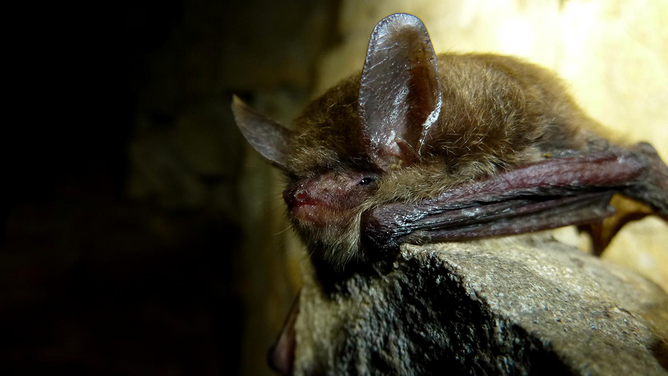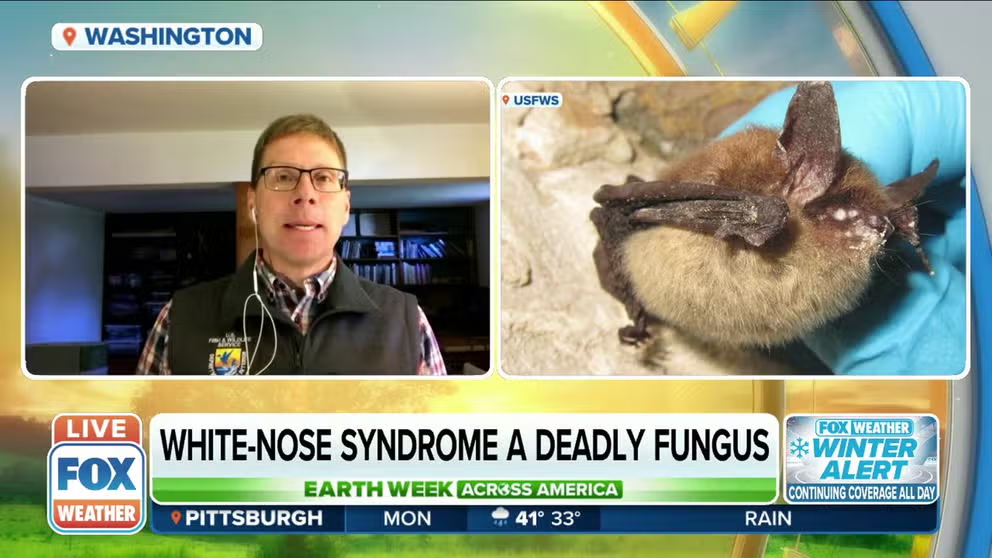Bat species could be reclassified as 'endangered' as fungus continues killing off population
Northern long-eared bat faces extinction due to deadly white-nose syndrome
Bat species facing extinction due to deadly white-nose syndrome
The northern long-eared bat population, which is currently classified as threatened, faces extinction due to the wide impacts of white-nose syndrome.
A deadly disease decimating the northern long-eared bat population across North America has prompted the U.S. Fish and Wildlife Service to propose reclassifying the species as endangered.
The bat, which is currently classified as threatened, faces extinction due to the wide impacts of white-nose syndrome.
HOW TO WATCH FOX WEATHER ON TV
The USFWS said white-nose syndrome has spread to nearly 80% of the entire species across the continent and almost 100% of the population here in the United States since the species was classified as threatened in 2015.
The move to reclassify the bats comes after a review showed that the population continues to decline and now meets the definition of endangered under the Endangered Species Act.

Northern long-eared bat with visible symptoms of white-nose syndrome.
(National Parks Service/Steven Thomas)
"White-nose syndrome is devastating northern long-eared bats at unprecedented rates, as indicated by this science-based finding," said U.S. Fish and Wildlife Service Regional Director Charlie Wooley. "The service is deeply committed to continuing our vital research with partners on reducing the impacts of white-nose syndrome while working with diverse stakeholders to conserve the northern long-eared bat and reduce impacts to landowners."
HOUSTON'S BRIDGE BATS TOOK A HIT DURING THE 2021 TEXAS FREEZE
Bats are critical for a healthy ecosystem and contribute at least $3 billion annually to the U.S. agriculture economy through pest control and pollination. The USFWS says the move to the endangered species list would help the species before population declines become irreversible.
The northern long-eared bat can be found in 37 states across the eastern and north-central United States as well as Washington, D.C and in Canadian provinces from the Atlantic Coast to the southern Northwest Territories and eastern British Columbia.

This photo shows a Tri-colored bat with visible symptoms of white-nose syndrome.
(Darwin Brack)
White-nose syndrome affects hibernating bats and is caused by a fungus, Pseudogymnoascus destructans. It looks like white fuzz on a bat's face, which is how it got its name, according to the White-nose Syndrome Response Team.
HOW SCIENTISTS LEARNED ABOUT CLIMATE CONDITIONS HUNDREDS OF YEARS AGO IS 'BATTY'
It attacks the bare skin of bats while they're hibernating and are inactive. As it grows and spreads, it changes the bats' behavior which causes them to become more active and burn up the fat they need to survive during the winter.
They may also fly outside during the daytime during the winter months.
The northern long-eared bat spends the winter hibernating in caves and mines that have a constant temperature, high humidity and no air currents, according to the USFWS. They're also often found in small crevices or cracks with only their noses and ears visible.
During the spring, summer and fall months, they can live alone or in colonies under tree bark or in cavities or crevices in dead and living trees. They also can be found in barns and sheds, but it's uncommon.
The USFWS says they prefer forested areas not only for roosting but for finding food and traveling between their summer and winter habitats.
A virtual public information meeting will be held on April 7 from 6-8:30 p.m. Central for anyone wishing to learn more about why the USFWS is pushing to reclassify the bats as endangered.
For more information about that meeting, click here.
